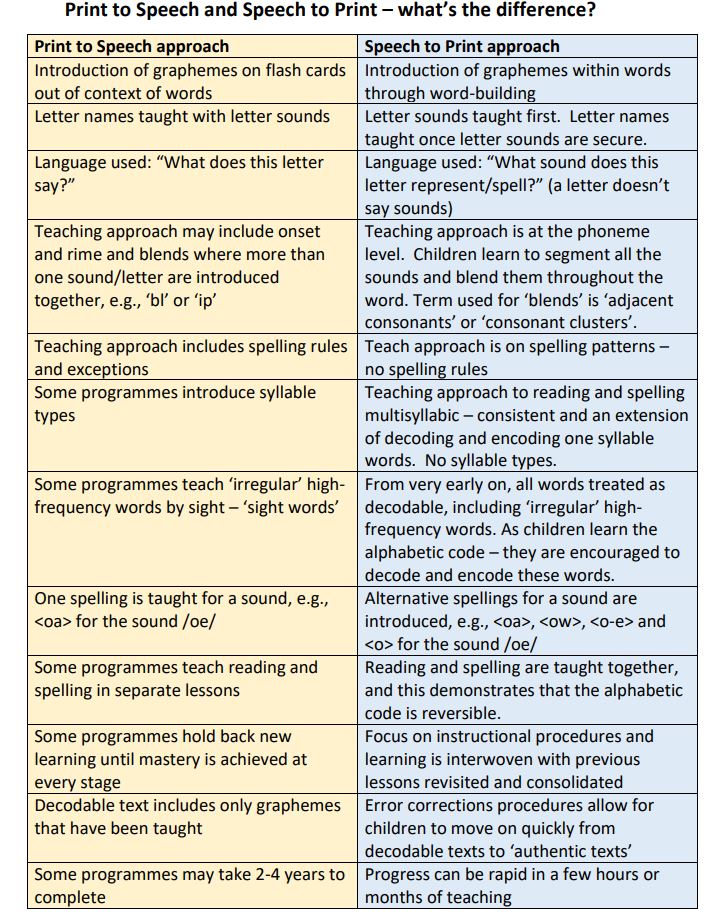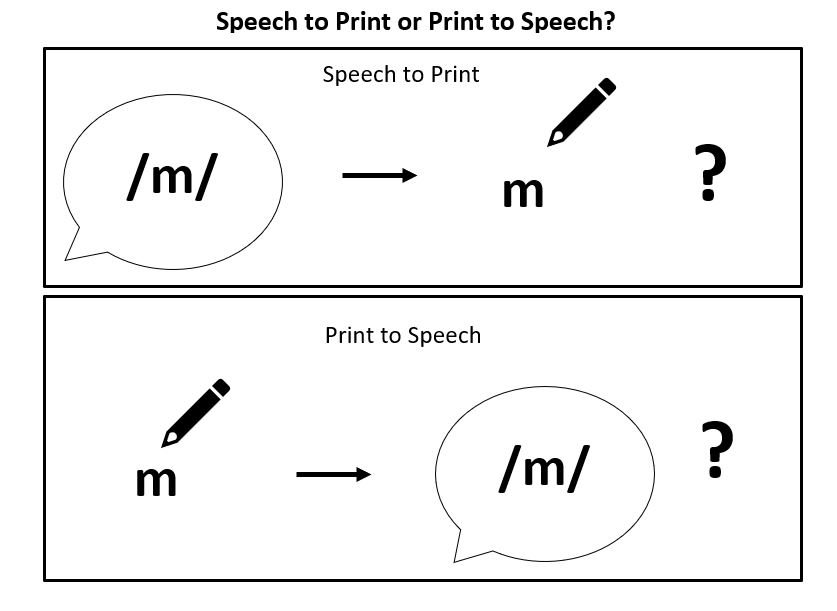Have you heard of a phonics approach called ‘Speech to Print’? Another name for it is ‘Linguistic Phonics’. This approach is used in a number of programmes: Sounds Write, EBLI and Reading Simplified.
The Speech to Print approach starts from the sounds in words (phonemes) and not the spellings (letters or spelling patterns). It follows the alphabetic principle: the English spelling system is rooted in the sounds of the language. Letters spell sounds in words. A Speech to Print phonics programme will be constructed along the 44 sounds of English. How does this approach differ from other phonics programmes? If the Alphabetic Code is reversible, does it matter if we start from the Speech or from the Print?
I recently watched a webinar by Nora Chabazi of EBLI, a Speech to Print phonics programme that developed from PhonoGraphix. Nora outlines the differences between these two different approaches to reading instruction. Here is a summary. As you will see, there are distinct implications for how we teach reading.

To watch Nora’s talk click here:
If you would like to learn more about Linguistic Phonics you might be interested in joining a new Face Book Group Speech to Print – Linguistic Phonics Exploration – for more information click here.
#speechtoprint #speech2print #howtoteachphonics #teachphonics #howtoteachreading


